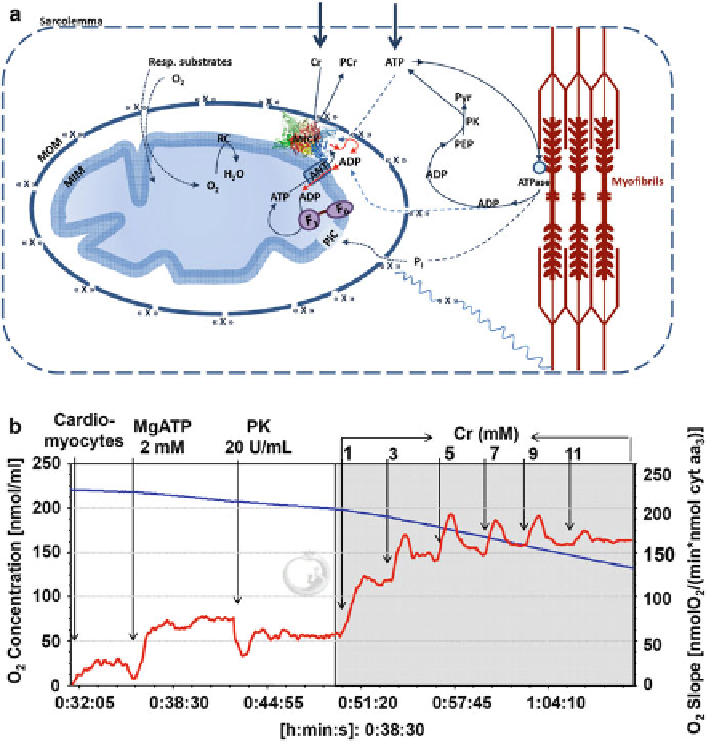Biology Reference
In-Depth Information
Fig. 11.8 Control of mitochondrial respiration by creatine in permeabilized cardiomyocytes. (a)
Schematic representations of an oxygraph experiment and of a mitochondrion in a permeabilized
cardiac cell, surrounded by cytoskeletal proteins and myofibrils. First, added ATP is hydrolyzed by
cellular ATPases and the ADP produced stimulates respiration. Phosphoenolpyruvate (PEP) and
pyruvate kinase (PK) continuously trap extra-mitochondrial ADP to regenerate ATP. Stepwise
addition of Cr in the presence of ATP stimulates mitochondrial creatine kinase (MtCK) that
controls respiration through continuous intra-mitochondrial re-cycling of ADP from ATP. (b)
Oxygraph recording of Cr stimulated respiration. This experiment enables the estimation of the
apparent affinity of MtCK for Cr. The
left scale
and the
blue
trace indicate the oxygen concentra-
tion (nmol O
2
ml
1
) in the experimental milieu. The
right scale
and the
red
trace denote the rate of
oxygen uptake (in nmol O
2
min
1
nmol
1
cyt. aa3). Adapted from (Guzun et al.
2009
) with
permission
that increases adenine nucleotides recycling within the MI (Saks et al.
2012
; Guzun
et al.
2009
; Timohhina et al.
2009
; Jacobus and Saks
1982
). The loss of
Cr-stimulated respiration in transgenic MtCK-knockout mice confirms the central
role of MtCK in respiration regulation (Kay et al.
2000
).

Search WWH ::

Custom Search